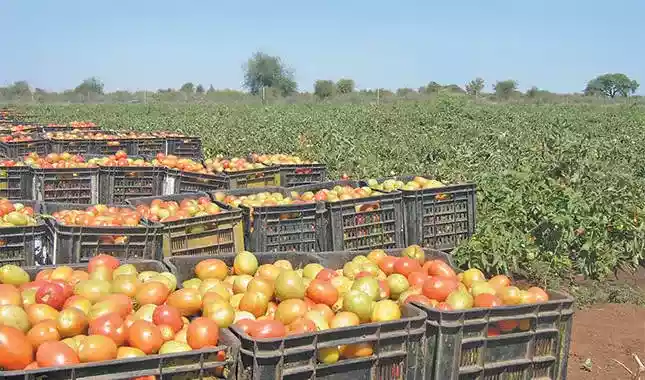
POST-HARVEST losses remain very high in most African countries due to lack of solid plans on handling surplus commodities.
This enduring problem is not only at farmer or community level, but extends to national policy level, where the quality of grain in national reserves often goes down to a point of not being fit for human consumption. The story is worse for perishable commodities like fruits and tomatoes.
Development organisations like the United Nations Food and Agriculture Organisation have commissioned several studies on post-harvest losses and food waste, but recommendations from such studies have remained on paper with no tangible translation to solutions.
Absence of processes
Food loss and waste worsens during bumper harvests, indicating lack of preparedness to handle excess food by communities and policymakers. There is a limit to what communities can do with abundant fruits like mangoes except raw consumption, giving away or dumping them on the mass market, especially when almost every household is producing mangoes at the same time.
Mechanisation programmes by government and development agencies focus on the production side with no meaningful equipment and technologies directed at value addition, processing and preservation.
As long as this gap is not closed, all investments on the production side will not yield sustainable results. Processes that build farmer confidence to continue producing and reliable pathways to market are long overdue in most African countries. Many farmers have stopped producing indigenous commodities like small grains, sunflower, cowpeas and indigenous chickens due to absence of reliable markets.
This challenge is more than 50 years old across Africa, but there has not been any solution even at African Union level. Almost everybody now knows how to plant crops or keep livestock but without an idea about what to do with the produced food, farmers continue to be demoralised.
- Mavhunga puts DeMbare into Chibuku quarterfinals
- Bulls to charge into Zimbabwe gold stocks
- Ndiraya concerned as goals dry up
- Letters: How solar power is transforming African farms
Keep Reading
Organising and co-ordinating supply chains
In the absence of proper co-ordination and distribution systems, commodities fail to reach the consumer due to lack of relationships between food producers and consumers. Weak relationships between farmers and traders often impede the smooth flow of food and trading between the production and demand sides.
In communities where digital finance is still far-fetched and cash is still king, co-ordinating supply chains and setting up reliable distribution systems can release pressure on cash.
When cash is needed at each value chain node, volumes of commodities which a single trader can procure are limited to the amount of cash in the hands of the trader. For instance, if a farmer with 1 000 tonnes of potatoes expects cash from a trader for the whole consignment, but the trader does not have the cash, the farmer gets stuck with the produce and ends up selling at give-away prices.
Meanwhile, if there is a trusted distribution system based on relationships between the farmer, transporters and traders, the farmer can easily release the commodity on the confidence s/he will be paid once commodities are sold by the trader within a few days.
That way, more commodities move swiftly with no cash changing hands and that releases pressure on cash in circulation.
Traders in distant cities can place orders with peer traders in big cities where commodities are aggregated and move flawlessly to destinations where demand is high through signals within supply chain nodes. That way, it becomes very easy to ensure consistency in supply on the back of a co-ordinated and organised system with good supply chains informing production unlike cases where farmers produce blindly.
Distribution systems enable commodities to get the best value as traders offer more to the farmer, unlike in cases where food moves in a haphazard manner leading to traders offering farmers less income as part of maintaining their margins.
This means an efficient distribution system will benefit farmers and the entire agricultural sector. It is another form of order financing where commodities are paid for at the end of the supply chain when consumers have had the time to buy.
While in the formal commercial system orders are used to secure loans, the same is not happening on African mass markets due to absence of proper organisation, registration of value chain actors, including volumes of commodities in transit from production to markets.
Creating more opportunities
Every commodity tries to fetch the best value as it moves along value chains. Lengthening the supply chains can create more job opportunities along the supply chain as compared to all commodities ending up at one big market in one city.
On the other hand, using cash creates more competition on available cash and anyone without cash fails to buy. As less commodities are bought, it means less money goes to the farmer and losses increase in production zones and on the market due to suppressed demand.
Ultimately return on investing in the entire agricultural sector goes down. Instead of expecting each node to have capital, the capital should be in supply chains moving commodities, with actors only paid for facilitating distribution of commodities to the end users.
The movement of commodities is often constrained in cases where a farmer who wants to release 50 tonnes of tomatoes expects the trader to have enough money to pay for that quantity immediately before selling the commodity.
Ideally, the farmer should have the confidence and comfort to release the 50 tonnes to the trader who is always in touch with consumers from where cash is sourced through commodities. What is often taken for granted by many people, including policymakers, is that the more pressure is exerted on the market, the more cash runs out of the market.
If commodities that come to the market have to be bought first using cash, it means traders in big African markets like Mbare should have at least US$300 000 cash everyday because consumers come later and in a disorganised way. Agricultural and financial authorities should be interested in questions like how much cash should be in African mass food markets in order to keep supply chains oiled?
The intrinsic value of commodities
When the market is dried of cash, commodity prices go down. The market specialises on different commodities and if few cabbage traders have cash for which many cabbage farmers compete, farmers end up knocking down cabbage prices to access the little cash in circulation.
This leads to commodities buying money instead of the other way round. Ideally, the intrinsic value of commodities should determine the price, not money. Why should a crate of tomatoes cost US$10 at one time and US$2 a few months down the road? Strangely, the same does not happen with processed food like Coca-Cola, where the price of a bottle of Coke is the same everywhere across the country.
The price of a bottle of Coke remains the same whether quantities are few or more. Why should not that be the case with necessities like tomatoes? This probably signals the challenges of using cash all the time in selling agricultural commodities.
Establishing aggregation models in a fluid manner based on seasonality of commodities can solve some of these challenges. There are times when aggregation of some commodities may not need to be intensified, unless when addressing shocks and levelling the playground to ensure fair trade and minimise the dominance of some suppliers who can easily manipulate the market and consumers if unchecked. Markets always give signals about their needs.
African economies have become more fluid and are moving rapidly away from brick-and-mortar businesses. In most big cities, trading is now too fast and furious thanks to digital technologies through which orders are being shared quietly between farmers and traders.
If warehouses were necessary, all traders would be renting warehouses for six months to a year. That is not happening in countries like Zimbabwe because commodities are always in transit from big mass markets to diverse consumers across the country. No need for long storage period.










